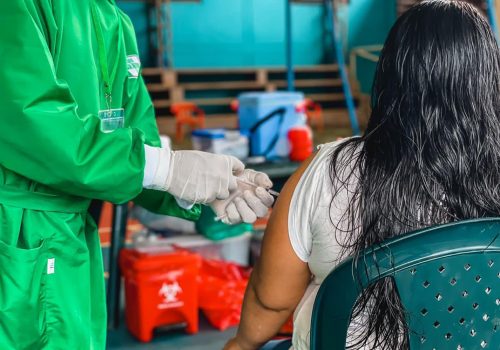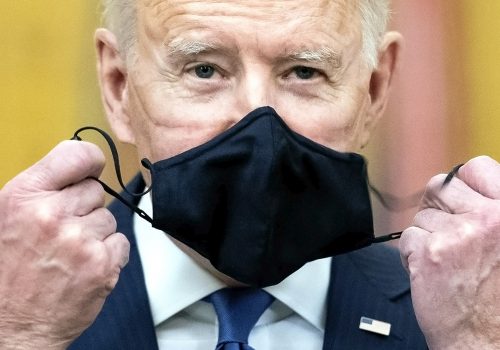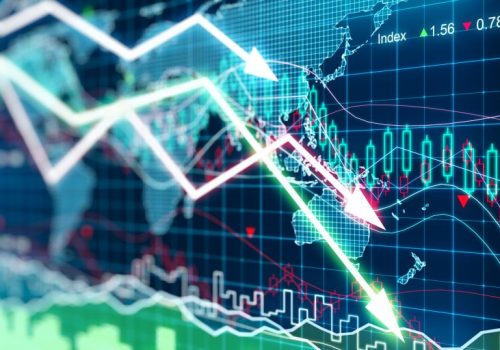COVID vaccines: India and China’s new diplomatic currency
On Thursday, India announced a temporary ban on exports of its Oxford-AstraZeneca COVID-19 vaccine—in a move that not only jeopardizes the global vaccine supply but also delivers a powerful blow the country’s “Vaccine Maitri” (Vaccine Friendship) policy.
That policy has contributed to the surprising success of the vaccination rollout in the small archipelagic nation of the Republic of the Seychelles. Unlike Israel—the current world leader in global vaccination, which secured its vaccine supply through a deal to provide data to Pfizer—the Seychelles has turned to regional powers to endow its vaccination campaign. In January, the island nation received 50,000 doses of the Chinese-made Sinopharm vaccine. Two weeks later, seeking to counteract Chinese inroads into the Seychelles, an Indian Navy aircraft carrier landed on the archipelago with an additional 50,000 doses of Covishield, the Indian-made AstraZeneca coronavirus vaccine.
This dynamic is not unique to the Seychelles. Around the world pharmaceutical superpowers such as China and India are increasingly relying on COVID-19 vaccines as a new and important form of diplomatic currency. The Biden administration’s slow reluctance to engage in vaccine diplomacy risks allowing these countries to gain an important advantage.
For a sense of how vaccines are currently moving around the globe, check out our new Vaccine Diplomacy Flowchart:
Although countries may have some altruistic intentions in distributing vaccines to other nations, their vaccine diplomacy is largely driven by a desire to advance national interests and cast themselves as a backbone of global public health.
For China, vaccine distribution is a logical next step in the evolution of the “Health Silk Road” that Chinese President Xi Jinping proposed in March 2020. In addition to aiming for soft-power gains of prestige and goodwill, Chinese policymakers have sought to tie their distribution of vaccines to the advancement of major projects under China’s Belt and Road Initiative (BRI). In early January, Chinese Foreign Minister Wang Yi toured four Southeast Asian nations with stalled BRI projects and linked shipments of China’s Sinovac vaccine with new loans and grants for infrastructure projects.
During Wang’s visit to the Philippines, he promised 500,000 vaccine doses as well as $1.34 billion in loan pledges for infrastructure projects and $77 million in grants. In Indonesia, which had already received three million Chinese-made vaccines, he secured new commitments to speed up completion of the BRI Jakarta-Bandung high-speed railway. In Myanmar, Wang’s commitment of 300,000 doses coincided with the signing of a memorandum of understanding to conduct a feasibility study of a 650 kilometer-long railway. These engagements are not just limited to Southeast Asia. In a February phone call with Wang, Algerian Foreign Minister Sabri Boukadoum said Algeria was willing to “promote the Belt and Road Initiative” after receiving assurances of Chinese vaccine donations. In addition to expanding its BRI project, Beijing also hopes its vaccination efforts will soften the stance of countries that have been threatened by China’s incursions in the South China Sea.
China is not alone in its use of COVID-19 vaccines to secure its interests and jockey for more soft power. As our Vaccine Diplomacy Flowchart shows, Russia, India, and the United Arab Emirates have also begun to distribute vaccines.
India, which accounts for 60 percent of global vaccine-production capacity, has also become a leader in vaccine diplomacy. The Serum Institute of India is churning out over 2.5 million doses of the AstraZeneca vaccine a day. The county is leveraging its strong vaccine-manufacturing capacity to revitalize its global position and repair strained ties with its neighbors in South Asia, while countering China’s growing influence in the region.
At the start of year, Indian Prime Minister Narendra Modi announced his new “Vaccine Friendship” policy—a humanitarian effort to provide vaccines made in India to countries around the world. This policy and the vaccine deliveries have earned India goodwill globally, with thanks coming from leaders such as Justin Trudeau, Andrés Manuel López Obrador, and Jair Bolsonaro.
In January, when Bangladesh refused to share the cost of a clinical trial with China, New Delhi sent Bangladesh a gift of two million doses and facilitated a contract for thirty million doses. Nepal and Sri Lanka, among others, have similarly opted for vaccines manufactured in India as opposed to China.
All told, whether delivered under the global vaccination initiative COVAX or as part of its commercial and diplomatic deals, India has shipped over sixty million doses to seventy-six nations. At the same time, it has administered at least one vaccine shot to only about fifty million people in India, or around 4 percent of the population. With COVID-19 cases rising again in the country and threatening its economic recovery, India’s task of vaccinating its own people has taken priority for the government. On March 25, the Modi government announced a temporary ban on vaccine exports that is expected to remain in place for the next few months. Given India’s centrality to the manufacturing of COVID-19 vaccines, this move could endanger global vaccine rollouts, especially in developing countries, as well as the nation’s own vaccine-diplomacy ambitions.
Meanwhile, three months after Russia and China shipped their first vaccines abroad, the United States has finally decided to follow suit. Following the first-ever Quad leaders’ summit on March 12, India, Japan, Australia, and the United States have agreed to work together to expand the global-vaccine supply—with one billion doses promised by 2022. The vaccines will be produced in India with funding from the United States and Japan. Australia will then distribute them throughout Southeast Asia.
This is a significant step in the right direction. As our tracker shows, China’s vaccine diplomacy has been concentrated in Southeast Asia, so a new source of vaccines will provide a necessary counterweight to China in the region. But it will take time for new production capacity to come online in India and many countries are not willing to wait for that. Jordan’s foreign minister, for example, has told reporters he will reach out to China and Russia for additional vaccines after his country received an inadequate number of vaccines from COVAX, which is co-led by the Coalition for Epidemic Preparedness, Gavi, and the World Health Organization.
A more immediate solution would be for the United States to tap into the thirty million doses that are currently bottled at AstraZeneca’s facility in West Chester, Ohio. The AstraZeneca vaccine is currently not authorized for use in the United States and there is intense debate regarding its future use there following controversies in Europe and allegations of incomplete data from US trials. Shipping these vaccines abroad would thus not present a direct trade-off in lost vaccinations for American citizens. Even as US regulators remain uncertain about the domestic authorization of the vaccine, other countries have reached out inquiring about the unused supply. The United States, in fact, recently authorized two such shipments of its supply of the AstraZeneca vaccine to Canada and Mexico in the form of a loan. Given that the vaccine still enjoys approval in more than seventy other countries, many more would likely be open to such an arrangement.
If the United States truly wants to return to the world stage, as the Biden administration has promised, its diplomatic outreach must extend beyond its core allies. Vaccine diplomacy may be the best way for the United States to do just that.
Nitya Biyani and Niels Graham are program assistants at the GeoEconomics Center.
Further reading
Image: An elderly man receives the China's Sinovac Biotech vaccine against the coronavirus disease (COVID-19) during the mass vaccination program for elderly people in Mexico City, Mexico March 25, 2021. REUTERS/Edgard Garrido


